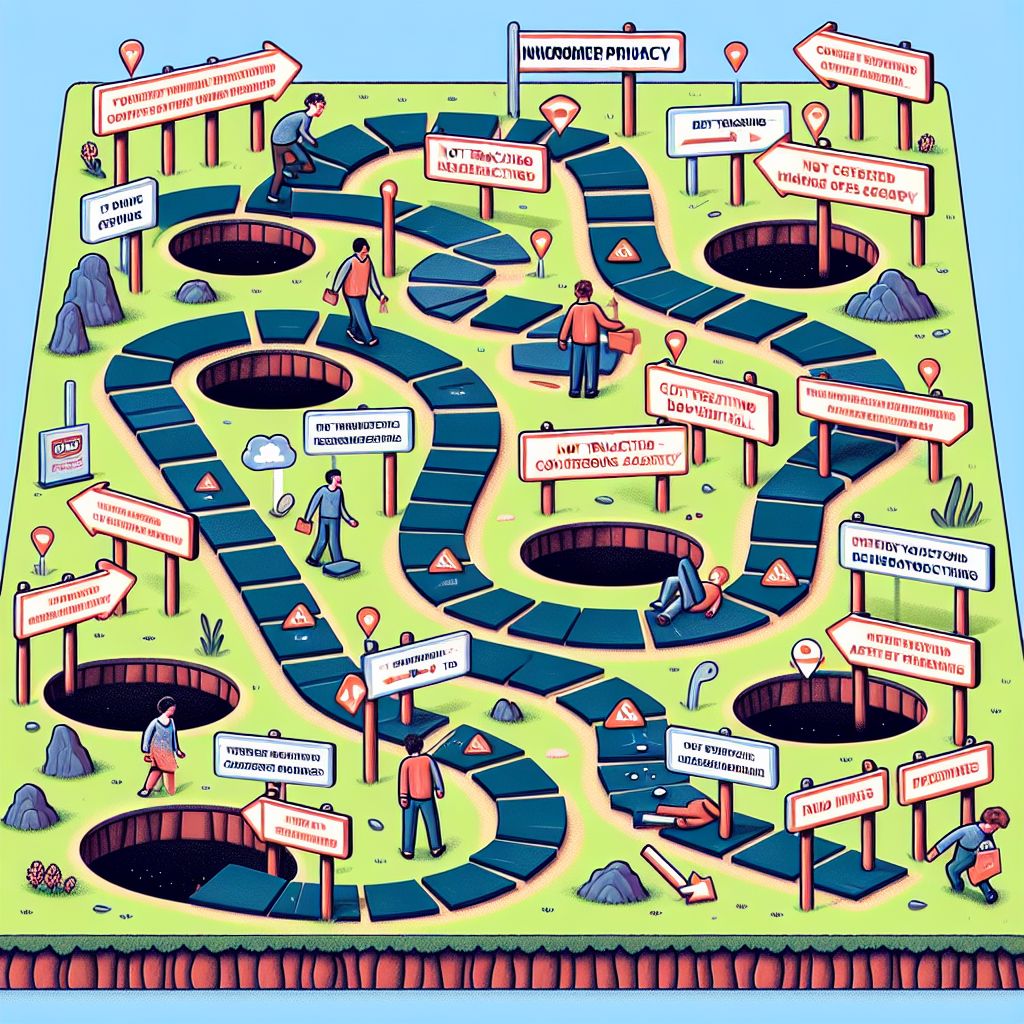
Key Takeaways
- Retargeting helps convert interested visitors into loyal customers by keeping your brand top of mind.
- Effective retargeting strategies can boost ad engagement by up to 400%.
- Different retargeting techniques include website-based, email, social media, and dynamic retargeting ads.
- Advanced tactics such as using lookalike audiences and behavior-based retargeting can further enhance your campaigns.
- Avoid common pitfalls like over-retargeting and neglecting ad frequency management to ensure success.
Retargeting Strategies: Turning Interested Visitors into Loyal Customers
Understanding the Basics of Retargeting
Retargeting is a powerful digital marketing strategy that focuses on re-engaging users who have previously interacted with your brand but have not yet converted into customers. By displaying targeted ads to these users as they browse the web, you can remind them of your products or services, ultimately encouraging them to return and complete a purchase.
Imagine a potential customer visits your website, adds a product to their cart, but leaves without making a purchase. Retargeting allows you to show ads for that specific product to the user as they visit other websites, increasing the chances of them returning to complete the purchase.
Most importantly, retargeting leverages user data and behavioral insights to deliver personalized ads, making it a highly effective tool for driving conversions and boosting ROI.

Why Retargeting is Essential for Home Service Business Digital Marketing
All home service businesses, including plumbing, HVAC, and landscaping, can greatly benefit from retargeting strategies. These businesses often rely on local customers who may visit their website but not immediately book a service. Retargeting helps keep these potential customers engaged and encourages them to take action.
For instance, if a homeowner visits a plumbing company’s website to check prices but doesn’t schedule a service, retargeting ads can remind them of the company’s services and prompt them to book an appointment. This continuous engagement can significantly increase conversion rates for home service businesses.
Benefits of Retargeting Over Traditional Advertising
Retargeting offers several advantages over traditional advertising methods:
- Higher Conversion Rates: Retargeted ads are shown to users who have already expressed interest in your brand, making them more likely to convert.
- Improved ROI: By focusing on warm leads, retargeting campaigns often yield a higher return on investment compared to broad, untargeted ads.
- Personalization: Retargeting allows for highly personalized ad content, which resonates better with users and drives engagement.
- Brand Recall: Frequent exposure to your brand through retargeting ads helps reinforce brand recall and keeps your business top of mind.
Impact on Conversion Rates
Retargeting has a profound impact on conversion rates. Retargeted users are three times more likely to click on ads compared to new users. This is because retargeting ads are tailored to users’ previous interactions with your brand, making them more relevant and compelling.
Retargeting strategies can shorten the sales cycle by reminding users of their initial interest and encouraging them to take the next step. This can be particularly beneficial for home service businesses, where customers may take time to decide before booking a service.
Customer Engagement and Brand Recall
Retargeting ads help maintain a continuous engagement with potential customers, keeping your brand at the forefront of their minds. This ongoing exposure can significantly enhance brand recall and drive repeat visits to your website.
By consistently showing retargeting ads to users who have previously interacted with your brand, you can build a stronger connection with them. This not only increases the likelihood of conversions but also fosters long-term customer loyalty.

Effective Retargeting Techniques for Home Service Business
Website-Based Retargeting
Website-based retargeting involves placing a tracking pixel on your website to collect data on visitors. This pixel tracks user behavior, such as pages visited and actions taken, allowing you to create targeted ads based on this information.
For example, if a user visits your “Plumbing Services” page but doesn’t book an appointment, you can show them ads highlighting your plumbing services and any related special offers. This targeted approach can effectively nudge them towards conversion, as explained in our article on content marketing vs paid ads.
Email Retargeting
Email retargeting leverages your email list to re-engage users who have shown interest in your services. By sending personalized emails based on their previous interactions, you can remind them of your offerings and encourage them to take action.
For instance, if a user signs up for your newsletter but hasn’t booked a service, you can send them a follow-up email with a special discount or informative content about your services. This personalized approach can drive higher engagement and conversions.
Identifying Target Audiences
Identifying the right target audience is important for the success of your retargeting campaigns. Start by segmenting your audience based on their behavior and interactions with your website. You can create segments for users who visited specific service pages, added items to their cart but didn’t purchase, or spent a significant amount of time on your site.
Besides that, consider demographic factors such as age, location, and interests. This will help you create more personalized and relevant ads that resonate with your audience. Use analytics tools like Google Analytics to gather insights and refine your audience segments.
Remember, the more precise your audience segmentation, the more effective your retargeting efforts will be.
Crafting Engaging Ad Content
Once you’ve identified your target audience, the next step is to craft engaging ad content. Your ads should be visually appealing, concise, and include a clear call-to-action (CTA). Use high-quality images or videos that showcase your services and highlight any special offers or discounts.
Create ads that feature before-and-after images of your projects. This not only grabs attention but also demonstrates the value of your services. Make sure your ad copy is compelling and addresses the needs and pain points of your audience. The key to successful ad content is relevance and personalization. Tailor your ads to the specific interests and behaviors of your audience to drive higher engagement and conversions.
A/B Testing for Optimization
A/B testing, also known as split testing, is a method of comparing two versions of an ad to determine which one performs better. This technique is essential for optimizing your retargeting campaigns and ensuring you get the best results.
Start by creating at least two variations of an ad with different elements, such as headlines, images, or CTAs. Run all versions simultaneously and monitor their performance using metrics like click-through rates (CTR) and conversion rates. Analyze the data to identify which version resonates more with your audience.
Repeat this process regularly to continuously refine and improve your ad content. By doing so, you’ll be able to maximize the effectiveness of your retargeting efforts and achieve better results.

Advanced Retargeting Tactics for Home Service Business
Once you’ve mastered the basics of retargeting, it’s time to explore advanced tactics that can further enhance your campaigns. These strategies can help you reach a broader audience and drive even higher engagement and conversions.
Using Lookalike Audiences
Lookalike audiences are a powerful tool that allows you to expand your reach by targeting users who share similar characteristics with your existing customers. Platforms like Facebook and Google Ads offer lookalike audience features that use machine learning to identify potential customers based on your existing data.
If you have a list of customers who have booked your services, you can create a lookalike audience to target users with similar demographics and interests. This can help you attract new customers who are more likely to be interested in your services.
Sequential Retargeting
Sequential retargeting involves showing a series of ads to users in a specific order. This technique allows you to guide users through the customer journey and provide them with relevant information at each stage.
You can start by showing an ad that introduces your services, followed by an ad that highlights customer testimonials, and finally an ad with a special offer to encourage conversion. This sequential approach can help build trust and nurture leads more effectively.
Behavior-Based Retargeting
Behavior-based retargeting focuses on targeting users based on their specific actions and behaviors on your website. This allows you to create highly personalized ads that address the unique needs and interests of each user.
For instance, if a user visits your “HVAC Repair” page and spends a significant amount of time reading about your services, you can show them ads that highlight your expertise in HVAC repair and offer a discount on their first service. This targeted approach can significantly increase the chances of conversion.

Tips for Leveraging Data in Retargeting for Home Service Business
Data is the backbone of effective retargeting campaigns. By leveraging data, you can gain valuable insights into user behavior, preferences, and trends, allowing you to create more targeted and personalized ads.
Importance of Data Integration
- Integrate data from various sources, such as website analytics, CRM systems, and social media platforms, to get a comprehensive view of your audience.
- Use data integration tools to streamline the process and ensure data accuracy.
- Analyze the integrated data to identify patterns and trends that can inform your retargeting strategies.
By integrating data from multiple sources, you can create a more holistic view of your audience and tailor your retargeting efforts accordingly.
Utilizing Analytics Tools
Analytics tools are essential for tracking and measuring the performance of your retargeting campaigns. Use tools like Google Analytics, Facebook Ads Manager, and other platform-specific analytics to monitor key metrics such as CTR, conversion rates, and return on ad spend (ROAS).
These tools provide valuable insights into the effectiveness of your campaigns and help you identify areas for improvement. Regularly review your analytics data and make data-driven decisions to optimize your retargeting efforts.
Tracking User Behavior and Preferences
Tracking user behavior and preferences is important for creating personalized retargeting ads. Use tools like heatmaps, session recordings, and user surveys to gather insights into how users interact with your website and what they are looking for.
If you notice that users frequently visit your “Emergency Plumbing” page, you can create retargeting ads that highlight your emergency services and offer a quick response time. This targeted approach can help address the specific needs of your audience and drive higher engagement.

Common Pitfalls and How to Avoid Them
While retargeting can be highly effective, there are common pitfalls that marketers and home service business owners should be aware of. Avoiding these mistakes can help you achieve better results and ensure the success of your campaigns.
Over-Retargeting
Over-retargeting occurs when users are bombarded with too many ads, leading to ad fatigue and annoyance. This can negatively impact your brand image and drive users away. To avoid this, it’s essential to understand the difference between content marketing and paid ads and strike a balance in your strategy. This ensures that your ads remain fresh and engaging without overwhelming your audience.
Ignoring Audience Segmentation
Failing to segment your audience can result in generic ads that don’t resonate with users. Audience segmentation allows you to create tailored ads that address the specific needs and interests of different user groups.
Use analytics tools to segment your audience based on factors such as behavior, demographics, and interests. This will help you deliver more relevant and personalized ads that drive higher engagement and conversions.
Neglecting Ad Frequency Management
Ad frequency management is important for maintaining a positive user experience. Showing the same ad too frequently can lead to ad fatigue while showing it too infrequently can result in missed opportunities.
- Set frequency caps to control how often users see your ads.
- Rotate ad creatives regularly to keep your ads fresh and engaging.
- Monitor ad performance and adjust frequency settings as needed.
By managing ad frequency effectively, you can ensure that your retargeting campaigns remain impactful and well-received by your audience.

Future Trends in Retargeting
The world of retargeting is constantly evolving, with new technologies and trends emerging regularly. Staying ahead of these trends can help you maintain a competitive edge and maximize the effectiveness of your campaigns.
AI and Machine Learning in Retargeting
Artificial intelligence (AI) and machine learning are revolutionizing retargeting by enabling more precise targeting and personalization. These technologies analyze vast amounts of data to identify patterns and predict user behavior, allowing for more effective ad delivery.
AI can help optimize ad placement and timing, ensuring that users see your ads at the most opportune moments. Machine learning algorithms can also improve ad relevance by continuously learning from user interactions and adjusting ad content accordingly.
Privacy Considerations and Regulations
As privacy concerns continue to grow, regulations such as the General Data Protection Regulation (GDPR) and the California Consumer Privacy Act (CCPA) are shaping the landscape of digital marketing. These regulations require marketers to handle user data responsibly and transparently.
Ensure that your retargeting campaigns comply with privacy regulations by obtaining user consent for data collection and providing clear information about how their data will be used. Implementing privacy-friendly practices can help build trust with your audience and avoid potential legal issues.
Emerging Platforms and Channels
The rise of new platforms and channels presents exciting opportunities for retargeting. From social media platforms like TikTok to connected TV (CTV) and programmatic audio, exploring these emerging channels can help you reach a broader audience and stay ahead of the competition.
Consider diversifying your retargeting efforts by leveraging these emerging platforms. CTV allows you to deliver retargeting ads to users as they stream content on smart TVs, while programmatic audio enables you to reach users through digital audio ads on platforms like Spotify and Pandora.

Frequently Asked Questions
What is the main difference between retargeting and remarketing?
Retargeting typically refers to online ad placements and display ads targeting users who have visited your website but did not convert. Remarketing, on the other hand, often involves re-engaging users through email campaigns based on their previous interactions with your brand. Both strategies aim to re-engage potential customers but use different channels to do so.
How often should I update my retargeting ads?
It’s important to keep your retargeting ads fresh and relevant. Update your ad creatives at least every few months or whenever you notice a decline in performance. Regularly rotating your ad content can help maintain user interest and prevent ad fatigue.
Can retargeting work for small home service businesses?
Absolutely! Retargeting can be highly effective for small home service businesses. By targeting users who have already shown interest in your services, you can increase the likelihood of conversions and maximize your marketing budget. Tailor your ads to address the specific needs and pain points of your audience to drive better results.

Leave a Reply